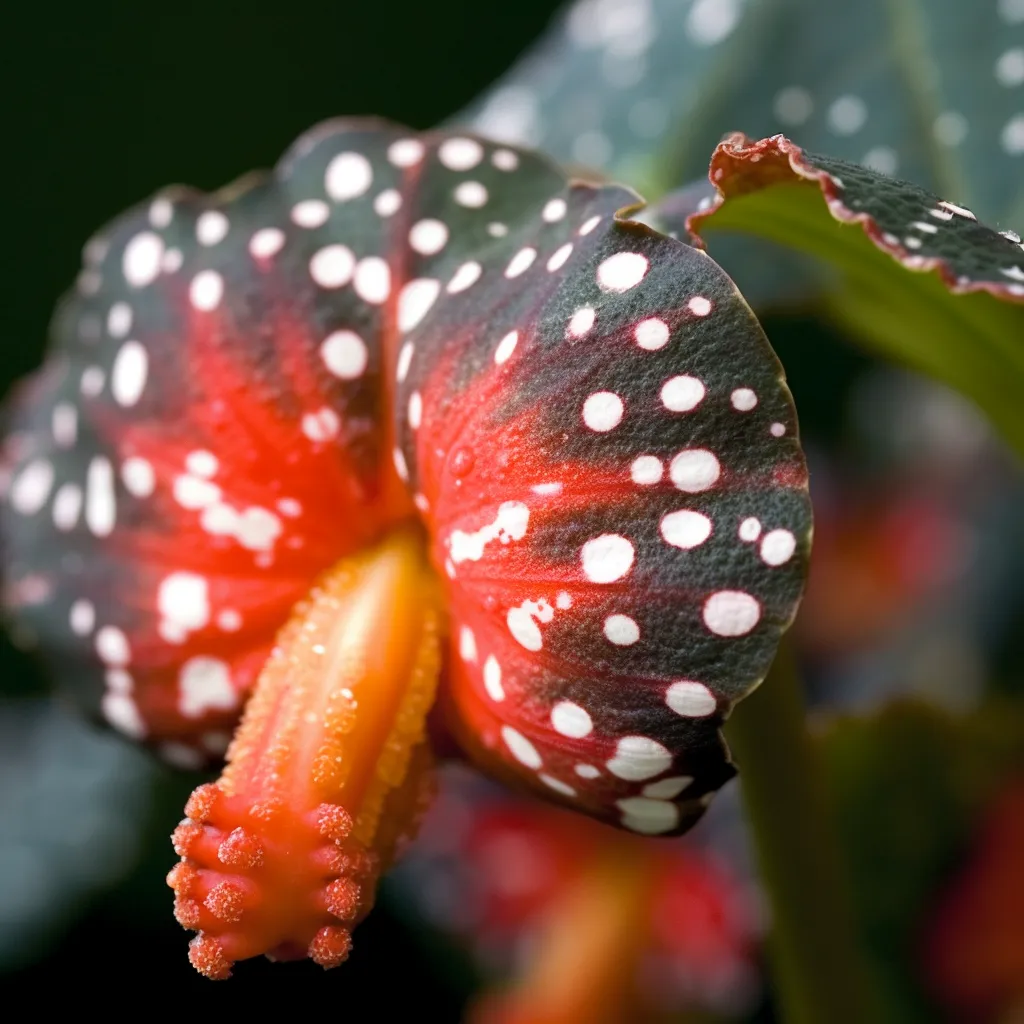Story of Day :
Contents
The Begonia Polka Dot Plant: A Complete Guide and Care Tips
Looking for a houseplant that’s easy to care for, colorful, and unique? Look no further than the begonia polka dot plant.
With its striking spotted leaves in shades of pink, red, white, and silver, this plant is sure to add a pop of color to any room in your home.
Description
The begonia polka dot plant (Hypoestes phyllostachya) is native to Madagascar but has become popular as a houseplant around the world.
It’s also known as the freckle face plant or measles plant due to its distinctive spotted leaves.
The spots can be pink, red, white or silvery-grey depending on the variety.
Care Guide

Lighting:
- The begonia polka dot plant prefers bright but indirect light.
- Avoid direct sunlight as it can burn the leaves.
- If you notice that your plant isn’t growing properly after being placed in one location for too long (i.e., leaning towards where light comes from), then it may need more light stimulation by rotating it towards different directions of daylight exposure every couple days especially if grown indoors near windows with limited natural light access areas
Watering:
- It’s important not to over-water your polka dot plants – they prefer soil that is moist but never soggy.
- You should water when the top inch of soil feels dry – usually about once a week.
- To check if you need to water your polka dot plants simply stick your finger into the soil to check the moisture level before watering.
Soil:
- The Begonia Polka Dot Plant prefers a well-draining soil that is rich in organic matter.
- You can create your own mixture by mixing together equal parts of potting soil, peat moss, and perlite or vermiculite.
- This plant requires good drainage to avoid root rot and fungal diseases.
Make sure the pot has drainage holes to allow excess water to drain away.
Temperature:
- The begonia polka dot plant thrives in temperatures between 65°F (18°C) and 75°F (24°C).
- Avoid putting it in areas with cold drafts as it can damage its foliage.
</bod

Propagation Tips
If you want more of these colorful plants, propagation is easy.
Here are some tips for propagating Begonia Polka Dot Plants:
- You can propagate from stem cuttings taken during spring or summer when the plant is actively growing.
- Cut a stem just below a node where leaves emerge and remove all but one or two leaves from the cutting.

- Dip the end of the cutting into rooting hormone powder then place it in moist potting mix or water until roots form – usually about two weeks for potting mix method but may take longer if just placed in water basins instead; change out old stagnant water every other day with fresh one.
.
- Once roots have formed, transplant them into their own pots filled with good quality soil.
Remember: Polka Dot Plants grow slowly in winter so be patient and wait for the right time to propagate
Common Problems and Solutions
Even with the best care, your Begonia Polka Dot Plant may still encounter some problems.
Here are some common issues and their solutions:

Brown Spots on Leaves:
This is often a sign that your plant is receiving too much direct sunlight.
Move it to a shadier spot or erect a sheer curtain to reduce sun exposure.
Falling Leaves:
If you notice leaves falling off, it could mean your plant is getting too little water or has poor drainage.
Make sure you’re watering enough but not overwatering; if necessary, repot into soil mixtures that have better drainage than what was originally used.
Pests:
Aphids, spider mites and mealybugs are common pests found on Begonia Polka Dot Plants.
Use insecticidal soap spray once every 7-10 days to get rid of them or wipe the leaves down gently with neem oil diluted in water solution (around 1 tablespoon per gallon of water).
Conclusion
In conclusion, the begonia polka dot plant is an easy-to-care-for houseplant that’s perfect for adding color and interest to any room in your home.
By following these care tips and propagation techniques mentioned above as well as monitoring for any pest issues early on before they spread out further can help keep this beautiful houseplant thriving perfectly.
- You can propagate from stem cuttings taken during spring or summer when the plant is actively growing.